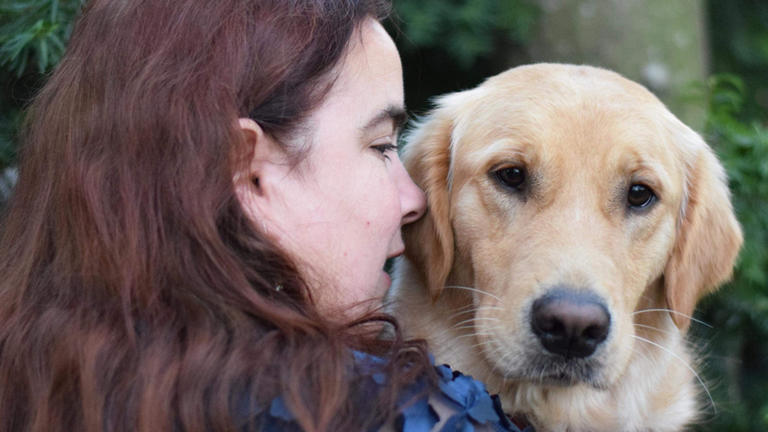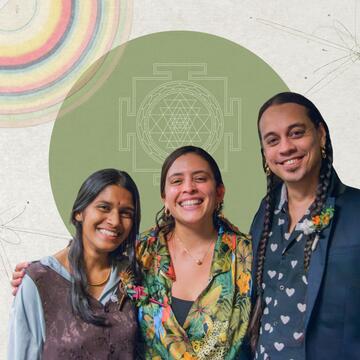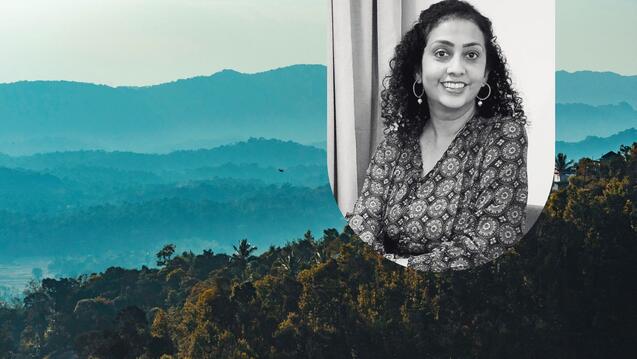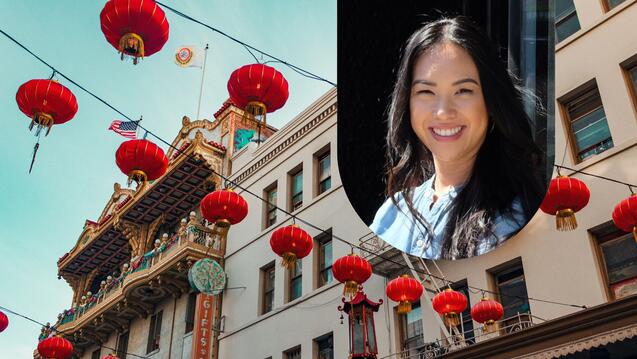A graduate’s journey integrating Eastern contemplative wisdom with Western depth psychological frameworks.

Finding Clarity Through Art
An interview with Master of Fine Arts alum Maia Scott on how her experience as a student helped shape her work now as a teacher and labyrinth designer
For our Spotlight On MFA series, we spoke with teacher, bodyworker, labyrinth designer, and 2014 alumna Maia Scott.
What do you currently do for work?
In addition to doing bodywork, which sustained me through my time at CIIS, I am an instructor at City College of San Francisco teaching accessible theater and arts through Disabled Students Programs and Services. I teach classes offsite at programs that serve people with disabilities who may not be able to attend regular classes on campus. I have the joy of bouncing around San Francisco stirring up creative empowerment.
Tell us a little about your journey. Who you were when you began at CIIS and who you are today.
I approached my work with a rigid intent to create my art for the sake of the art itself. As one who is visually impaired, I had all too often experienced people’s “Ooh, Ahh!” responses to my work, and how it’s rife with throughlines related to my world dimmed by blindness and all its challenges. So CIIS’ general bent on social justice and the constant references to it in classes initially drove me bonkers. People in my cohort encouraged me to share work inspired by my perspective as a blind woman, but I just wanted to advance my art practice as it relates to healing self and community. Then as we explored ways of seeing our world through one’s myriad of diverse identities, my world, art and otherwise, suddenly erupted into super-vivid clarity.
I expected that getting an MFA would level me up so that my blindness would be culled from my works in the eyes of those witnessing it. Instead, I found it interwoven into the patterns of my being along with other parts of me.
CIIS was a crash course in Me 101, and I came out feeling a sense of reverse dimensionality--bigger on the inside. Oh, and among my City College colleagues, I am seen as the community arts and social justice person. Fancy that!
How did CIIS prepare you for both the challenging and rewarding parts of your career?
My professors have the gift of asking all the right questions. For most of my life, I looked to my instructors for the right answers for me to memorize. During my time in the MFA program, thoughtfully posed questions kept me just enough off-balance and inspired to quest forth in pursuit of answers on my own. Discoveries made of my own volition proved much more embodied, applicable to life and thus potent. When I was invited to share my discoveries and felt heard, I found my esteem and sense of self much improved. I decided I wanted to be that teacher who had all the right questions.
Additionally, interacting with CIIS’ diverse student and faculty population showed me that my blindness wasn’t limited to sight. I could stand my ground on issues around ableism, being a woman and dancing in a short and chunky body. I thought I had a well-packed empathy toolkit. Said kit turned out to be one of those pocket multi-tools versus the large case (with room for more) that I walked away with upon graduation. I wanted to be that teacher who holds safe space for the challenges and joys of creative discovery.
What advice do you wish you had gotten before you started the MFA program?
I don’t know that I would wish for advice because knowing more than I did would have changed the way things happened. Working through the MFA program whirled me through moments of playfulness, vulnerability, fear, wonder, insecurity and so much more. I would not change any of that at all.
What’s next for you? What are you excited about?
Good things are happening right now. Currently, I am represented as a nominee in a Disability Change Makers, an exhibition of portraits of people with disabilities created by people with disabilities. It’s live at the SF main library through March 2020. I also facilitated an interdisciplinary arts workshop at the library in which we explored finding creative elements for writing, movement and art within our own selves and lives.
I also have been offering accessible arts professional development sessions with a colleague at sites such as City College and Teachers for Social Justice.
My biggest cause for a happy dance is being packaged right now as we speak: my guidebook Finger Walks. Realizing there is nominal accessible material about labyrinths accessible to the blind community, I wrote Finger Walks, which includes a guidebook in print and Braille along with 16 tactile, high-contrast finger labyrinths. I had the pleasure of writing the guidebook and helped to choose the featured patterns which encompass 4,000 years, diverse cultures, and varied complexity.
Finally, I just trained with a new guide dog, a bouncy little golden retriever named Gleam. Each of my guide dogs also has a lot to teach me about life. Gleam is teaching me to go forth with confident abandon and ask for forgiveness rather than permission.
Related Academic Program
Related News
Dr. Karim Dajani, M.A. '95, Integral Counseling Psychology, joined Clinical Psychology’s annual spring conference to explore the social unconscious in the work of Wilfred Bion.
Transformative Leadership alum Cynthia Huie, M.A. '24, brings creativity and connection to the San Francisco small-business community.



